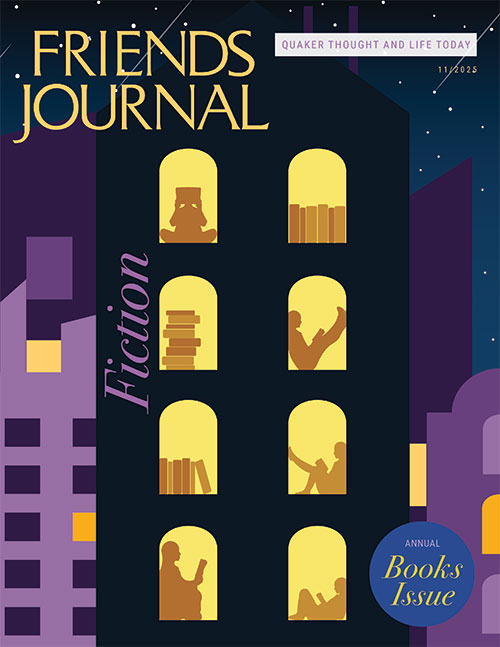There are times when I sit in worship when my attention turns to the physical structure keeping us warm and dry. The building is a generic nineteenth-century East Coast U.S. Friends meetinghouse, with six doors and a central partition whose pulleys still work to open and divide the two sides. The original building committee reported it took over 48,000 bricks to hold it all up. It’s handsome, certainly, but I marvel not so much at the wood, plaster, and brick but at all the labor that must have gone into the construction.
Building it was only the start. Even in the two years I’ve been the clerk of the meeting, we’ve had to replace a porch roof clipped by a delivery truck, repair and paint the columns holding that roof, and diagnose and fix a rather inconvenient sewer issue. We’re now looking at a chimney that’s starting to tilt. How many collective hours have Friends sat in committee meetings in that building over the last two centuries talking about everything that was falling apart?
The most time-consuming ongoing labor is, of course, simply showing up week after week, year after year. My meeting’s recent history had a stretch during which there were only two regular attenders every Sunday. Their faithfulness bridged a gap until more of us discovered the community and came to help shoulder some of the burden.
In the silence what I’m really thinking about are the ghosts, the ancestors: all those generations of Friends who kept coming, kept ministering, kept fixing, and kept believing that there would be another group of Friends to follow. Even meetings without buildings, or with Friends coming in via the modern miracle of instant video feeds, are indebted to ancestors who kept the faith going by telling the stories of Friends over and over again. And in continuing to tell our stories and fixing our porch roofs, we ourselves become ancestors to the future.
There are many such ghosts in this year’s fiction issue. I’m glad for this. A good story can bring long-dead Friends back to life. It can remind us who we are. Fiction is a wonderful medium with which to explore the generational cycles of life and the long span of history. You’re going to want to read many of these stories a second or third time, because the authors play on our assumptions and deliciously deceive us with plot twists that shift characters and motivations. Be sure to go to our website to read four more fiction pieces that we couldn’t squeeze into the print magazine.
This is the fifth year that Friends Journal has given over our November issue to fiction. We hope the storytelling in these pages helps to inspire even more tales of Friends. Also in this issue, don’t miss our annual expanded book review section, with 13 reading recommendations worthy of your time and money, including two fascinating biographies of eighteenth-century Quaker ancestors we can learn from today.






Comments on Friendsjournal.org may be used in the Forum of the print magazine and may be edited for length and clarity.